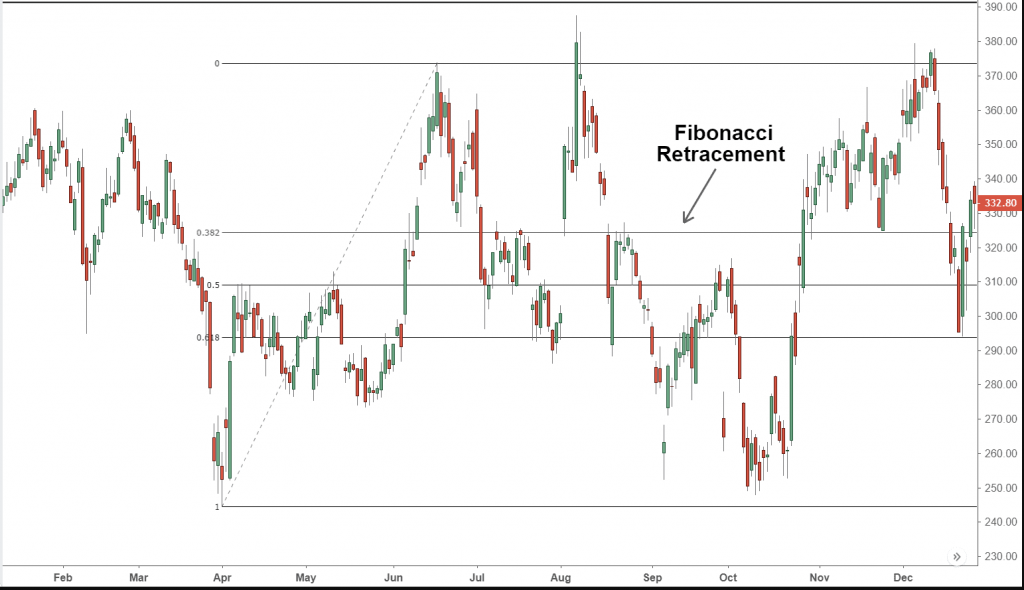استراتژی تجارت معکوس
استراتژی تجارت معکوس
انجام پایان نامه
چکیده
استراتژی تجارت معکوس
این مطالعه الگوهای برگشتی حرکت قیمت در افق کوتاه در بازارهای سهام چین از سال 2010 ، در بازه زمانی که سرمایه گذاران برای اولین بار مجاز به مشارکت در فروش کوتاه سهام بودند، را بررسی می کند.
ما از بازده هفتگی سبد سهام برنده-منهای- بازنده برای سهام در بورس اوراق بهادار شانگهای (SSE) بورس اوراق بهادار شنژن (SZSE) و بازار سرمایه گذاری رشد SZSE (GEM) برای بررسی سودآوری استراتژی تجارت. استفاده می کنیم.
وارونگی معاملات هفتگی سهام در سه بازار مشاهده و قابل توجه است، در صورتی که به نظر می رسد اگر دوره مرتب سازی تمدید شده یا مدت برگزاری کوتاه شود، بازده افزایش می یابد.
اثر بازده معکوس در GEM قویترین است اما به سرعت هم از بین می رود.
الگوی بهره وری سبد سرمایه گذاری برنده-منهای- بازنده برای بنگاههای با بازده پایین نیز در سه بازار چین مشاهده می شود و الگوی برگشت بازده برای شرکتهای با نسبت گردش مالی بالا رواج دارد.

استراتژی تجارت معکوس
مقدمه
اصطلاح “حرکت قیمت” به این معنی است که سهامی که در گذشته نه چندان دور عملکرد خوبی داشته اند (ضعیف) در دوره های بعدی همچنان عملکرد مطلوبی دارند (ضعیف) در حالی که “وارونگی قیمت” مرتبط با سهامی است که در گذشته نه چندان دور عملکرد خوبی داشته اند (ضعیف) اما پس از آن ضعیف (خوب) عمل می کنند.
تحقیقات موجود الگوهای معکوس افق کوتاه ، حرکت افق متوسط و الگوهای معکوس بلند مدت را ارائه می دهد (DeBondt & Thaler، 1985؛ Jegadeesh، 1990؛ Jegadeesh & Titman، 1993).
لمن (1990) نشان می دهد كه “برندگان” و “بازندگان” طی یك هفته معكوس می شوند بازده قابل توجهی را در هفته بعد به روشی كه منعكس كننده سود آشكار بازارسهام باشد ، پس از اصلاحاتی برای گسترش ارزش درخواستی و ارزش های معقول معامله ادامه یابد.
انجام مقاله
نتیجه گیری
این مطالعه شامل بازده هفتگی سهام SSE A ، سهام SZSE A و سهام SZSE GEM از هفته سیزدهم سال 2010 تا آخرین هفته نوامبر 2017 برای بررسی الگوهای برگشت حرکت در بورس های سهام چین می باشد که از اهمیت ویژه ای در میان بازارهای نوظهور برخوردار هستند.
همانطور که توسط نسبت گردش مالی بالا نشان داده شده، سرمایه گذارن چینی بیشتر تمایل دارند تا درگیر یک تجارت سوداگرانه شوند.
ما از استراتژیهای معاملاتی (برنده- منهای- بازنده) در SSE ، SZSE و GEM بطور جداگانه و میانگین بازده هفتگی از هر استراتژی برنده-منهای-بازنده را ارئه می دهیم. نتایج ما نشان می دهد که در بازارهای سهام چین یک استراتژی معکوس بهتر از یک استراتژی حرکت است.
بازده برای یک پرتفوی بازنده- منفی- برنده در طول یک افق کوتاه منفی و چشمگیر است و این مساله در بین سهام SSE A ، سهام SZSE A و سهام SZSE GEM قدرتمند است.
چند استراتژی خیلی کوتاه مدت بازده قابل توجهی را ایجاد نمی کنند، و معمولا برای یک دوره مرتب سازی یک هفته ای هستند.
با این حال ، برای چشم اندازهای طولانی تر، بازگشت هفتگی به استراتژی های بازنده-منهای- برنده به طور چشمگیری مثبت می شود.
این یافته با آنچه برای ایالات متحده و سایر بورس های سهام بالغ هست، تفاوت دارد، که مطالعات قبلی تأیید می کنند که حرکت قیمت در طول 1 تا 12 ماه رخ می دهد و معکوس شدن آن طی بیش از 13-60 ماه است.
به نظر می رسد بازده برای استراتژی تضاد تحت تأثیر دوره های مرتب سازی و نگهداری است.
اگر دوره مرتب سازی افزایش یابد، سرمایه گذار می تواند بازده بالاتری از استراتژی تجارت معکوس کسب کند.
علیرغم برخی از افق های بسیار کوتاه ، میزان بازده هفتگی همراه امتداد دوره مرتب سازی به سرعت افزایش یافته و با امتداد دوره نگهداری به سرعت کاهش می یابد.
سبدهای سهامی که دارای دوره مرتب سازی بیشتر از سه هفته و مدت زمان نگهداری بیشتر از یک هفته هستند، سوداورترین پرتفو ها هستند.
این نتایج حاکی از آن است که سرمایه گذاران معکوس باید تا هر زمان که ممکن است عملکرد قبلی سهام را مد نظر بگیرند و پس از تصمیم خرید سود را به سرعت ( برای مثال یک هفته) نقد کنند.
اشاره به این نکته اهمیت دارد که بازده سرمایه گذاری صفر است، و اینکه پس از تعدیل ریسک بازده مثبت ایجاد کنند، محتمل است. در میان سه بازار چینی یاد شده، GEM قوی ترین اثر برگشتی را تجربه می کند و وارونگی با سرعت در این بازار از بین می رود.
به طور متوسط میزان بازده استراتژی های معکوس در GEM بالاترین میزان در بین سه بازار چین است.
همچنین ، سودآورترین استراتژی معکوس در GEM بازده قابل توجهی بالاتر از سهام مقابل SSE A و SZSE A دارد.
علی رغم این، بازده حاصل از یک استراتژی متضاد پس از هشت هفته دیگر در GEM مقدار چشمگیری نیست، در حالی که در دو بازار دیگر همچنان سودآور است.
بازده مثبت حاصل شده از استراتژی های تجارت معکوس، برای سهام SSE و SZSE A به مدت سه ماه ادامه دارد.

انجام پروپوزال
ABSTRACT
This study investigates short-horizon momentum-reversal patterns in Chinese stock markets since 2010, when investors were first permitted to engage in short sales of stocks.
We use weekly returns of winner-minus-loser portfolios for stocks on the Shanghai Stock Exchange (SSE), the Shenzhen Stock Exchange (SZSE), and the SZSE Growth Enterprise Market (GEM) to examine the profitability of the trading strategy.
Weekly stock return reversals are observed and significant across the three markets, while returns appear to increase if the sorting period is extended or the holding period is shortened.
The return-reversal effect in the GEM is the strongest but also disappears most quickly.
A momentum pattern of winner-minus-loser portfolios for low-turnover-ratio firms is also observed across the three Chinese markets and the return-reversal pattern is prevalent for high turnover- ratio firms.
Introduction
The term “price momentum” means that stocks that performed well (poorly) in the recent past continue to perform well (poorly) in subsequent periods while “price reversal” refers to stocks that performed well (poorly) in the recent past but perform poorly (well) subsequently.
The existing literature presents extreme short-horizon reversal, intermediate-horizon momentum, and long-term reversal patterns (DeBondt & Thaler, 1985; Jegadeesh, 1990; Jegadeesh & Titman, 1993).
Lehmann (1990) suggests that the “winners” and “losers” over one week experience sizable return reversals the next week in a way that reflects apparent arbitrage profits that persist after corrections for bid-ask spreads and plausible transaction costs.
Jegadeesh and Titman (hereafter, JT, 1993; 2001) report that the returns on the winner-minus-loser portfolios in the US are positive and significant in the first 12 months and then become negative in months 13–60, whereas short-horizon return reversals are indicated by Jegadeesh (1990) and Lehmann (1990).
Scholars have attempted to
provide an explanation for the momentum or price reversals in mainly two ways: one group of scholars suggests that momentum profit is due to compensation for risk (Berk, Green, & Naik, 1999; Johnson, 2002; Sagi & Seasholes, 2007), and another group argues for a behavioral explanation, invoking underreaction or overreaction by traders that leads to momentum or reversals (DeBondt & Thaler,
1985; Hong & Stein, 1999, Hong et al., 2000; Yu, Liu, Fung, & Leung, 2018). Yet others focus on market friction or flawed models.
The momentum-reversal phenomenon observed in the stock markets in the United States and other developed countries has been
discussed extensively (Asness, Moskowitz, & Pedersen, 2013; Chui, Titman, & Wei, 2010; Novy-Marx, 2012; Rouwenhorst, 1998).
Some studies report momentum profits in Asian markets such as Hong Kong and Taiwan as emerging markets (Cheng & Wu, 2010; Hao, Chu, Ho, & Ko, 2016).
While prior studies also examined the patterns of momentum and reversals in the Chinese market, their study periods preceded March 2010, when regulations in China relaxed short-sale restrictions (Kang et el. 2002; Naughton, Truong, & Veeraraghavan, 2008).
This study examines the payoffs in momentum-reversal trading strategies in China over the period after the short-sale restrictions were lifted, allowing a momentum or contrarian strategy to be employed in China.
Conclusions
This study employs weekly returns for SSE A shares, SZSE A shares, and SZSE GEM shares from the thirteenth week of 2010 to the last week of November 2017 to investigate momentum-reversal patterns in Chinese stock markets, which are important emerging markets.
It is interesting to note that individual ownership seems to dominate Chinese stock markets, especially the GEM.
Chinese investors tend to engage in more speculative trading and trade more frequently, as shown by the high turnover ratio.
We use the trading (winner-minus-loser) strategies in the SSE, the SZSE, and the GEM separately and present weekly average returns from each winner-minus-loser strategy.
Our results show that a contrarian strategy outperforms a momentum strategy in Chinese stock markets. Returns for a winner minus-loser portfolio are negative and significant over a short horizon, and this is robust across SSE A shares, SZSE A shares, and SZSE GEM shares.
Several extremely short-term strategies do not produce significant returns, and they are generally for a one-week sorting
period.
However, for longer horizons, the weekly returns to loser-minus-winner strategies become significantly positive.
This finding differs from that for US and other mature stock markets, where prior studies document that price momentum occurs over 1–12 months and reversal over 13–60 months.
Returns for the contrarian strategy seem to be influenced by the sorting and holding periods. If the sorting period is extended, the investor can obtain higher returns from the contrarian strategy.
Similarly, if the holding period is shortened, the investor will obtain higher profits.
In spite of some extremely short horizons, the magnitude of the weekly returns increases quickly with the length of the sorting period and decreases quickly with the length of the holding period.
The most profitable portfolios are those with a sorting period longer than three weeks and a holding period longer than one week.
These results suggest that contrarian investors need to observe prior stock performance as long as possible and realize profits quickly after the purchase decision, for example, in one week.
It is important to point out that the returns are zero investments, and they are likely to produce positive returns after risk adjustment.
Among the three Chinese markets, the GEM experiences the strongest\ reversal effect, and the reversal disappears the most quickly in this market.
The magnitude of returns, on average, from contrarian strategies in the GEM is the highest across the three Chinese markets.
Also, the most profitable contrarian strategy on the GEM yields significantly higher returns than the counterparts for SSE A shares and SZSE A shares.
However, after eight weeks the returns from a contrarian strategy are no longer significant on the GEM, while it continues to be profitable on the other two markets.
The positive returns from contrarian trading strategies for SSE and SZSE A shares persist for three months.
برای مشاهده مطالب بیشتر به سایت www.farzdon.ir مراجعه نماید.

